In the morning, while we were eating breakfast at the hotel restaurant, a man from the car rental company met us to give us our rental car for the day. I walked with him up the street to where the car was parked. On the way to the car he told me his name was Dionysos.
“Like the god of wine,” I replied.
“Yes.”
“You must be trouble.”
“No. I don’t even drink. It’s not a fitting name for me at all.”
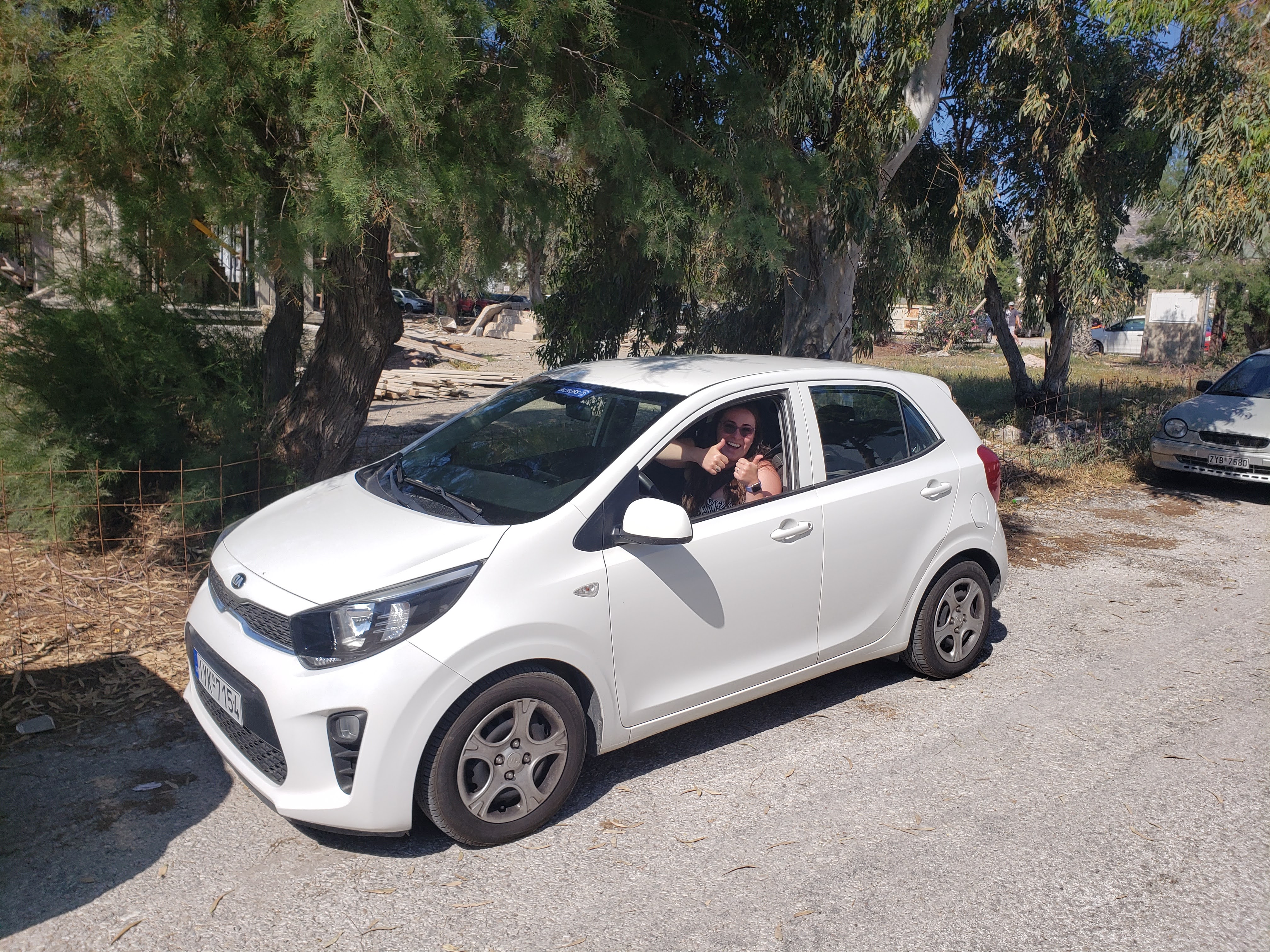
After breakfast, we took drove the car to our first stop, the archeological site of the ancient city of Assyrtiko. It was sold to me as the Pompeii of Greece. It was an ancient Minoan city, that had been buried in magma 4000 years ago. Like Pompeii, the city was preserved beneath the hardened magma.
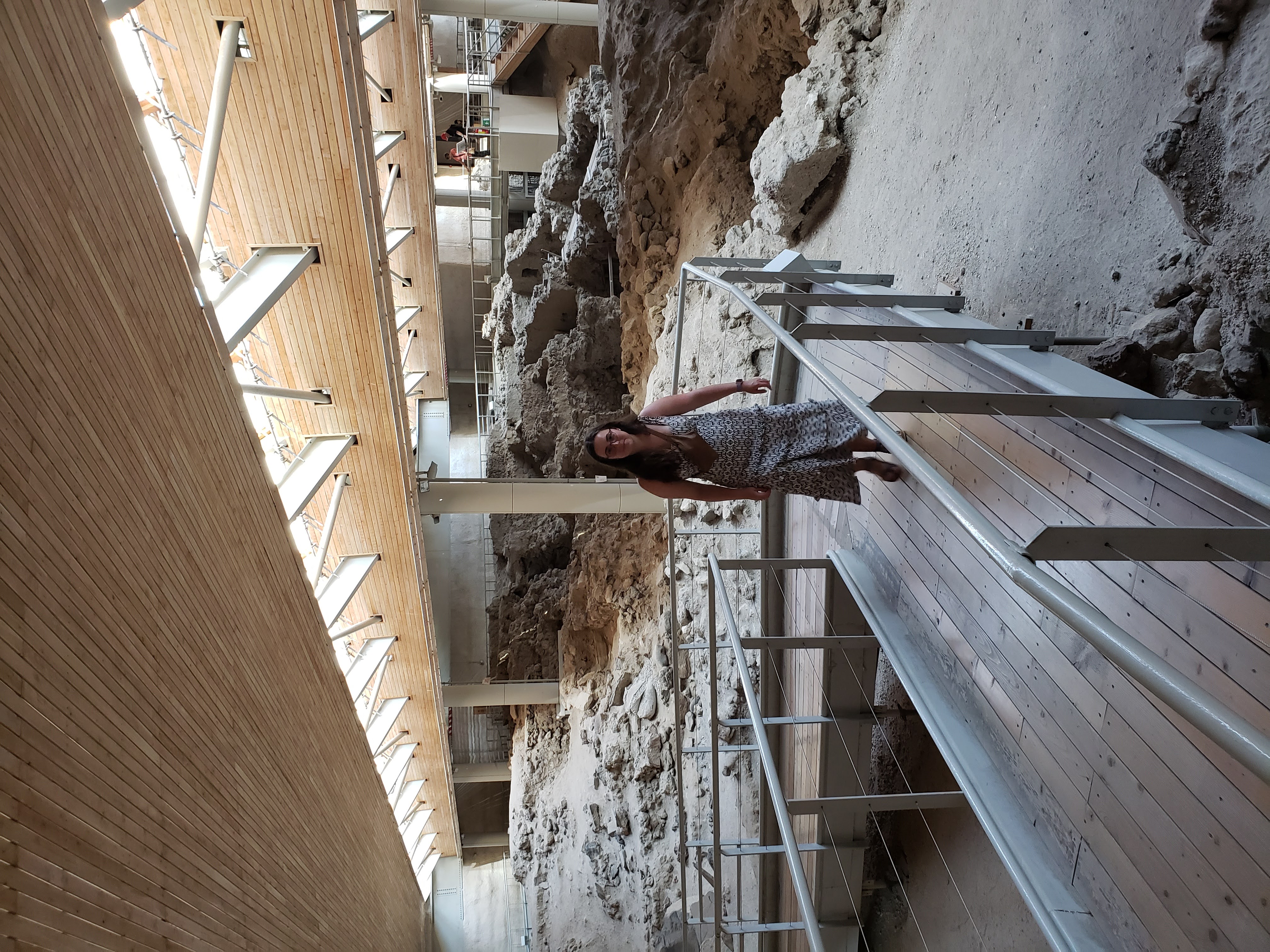
There was a lot to be impressed by at the archeological site. The extent to which the magma had preserved every day buildings was astounding. Dwellings were up to three floors tall, yet still had need of only minor reconstruction. I thought back to other archeological sites from a similar time, like Mycenae and Knossos. There only the bases of the most impressive dwelling were preserved.
On the other hand these were merely regular buildings. There were no monuments, temples, or palaces. There were no myths associated with Minoan Santorini as far as I know (other than the tenuous connections to it being the lost city of Atlantis, which I’ll elaborate on later), so it was tough to get overly excited. Also, the wall frescoes, which had been preserved by the volcanic rock had been removed and taken to various museums. In fact, we had already seen a few of the frescoes when we went to the Archeological Museum in Athens. And I would say, seeing the preserved frescoes in Athens was more exciting than seeing the bare walls of the preserved building in Santorini. I only make this remark in case the reader happens to be planning their vacation to Greece using this blog and is choosing between the two attractions.

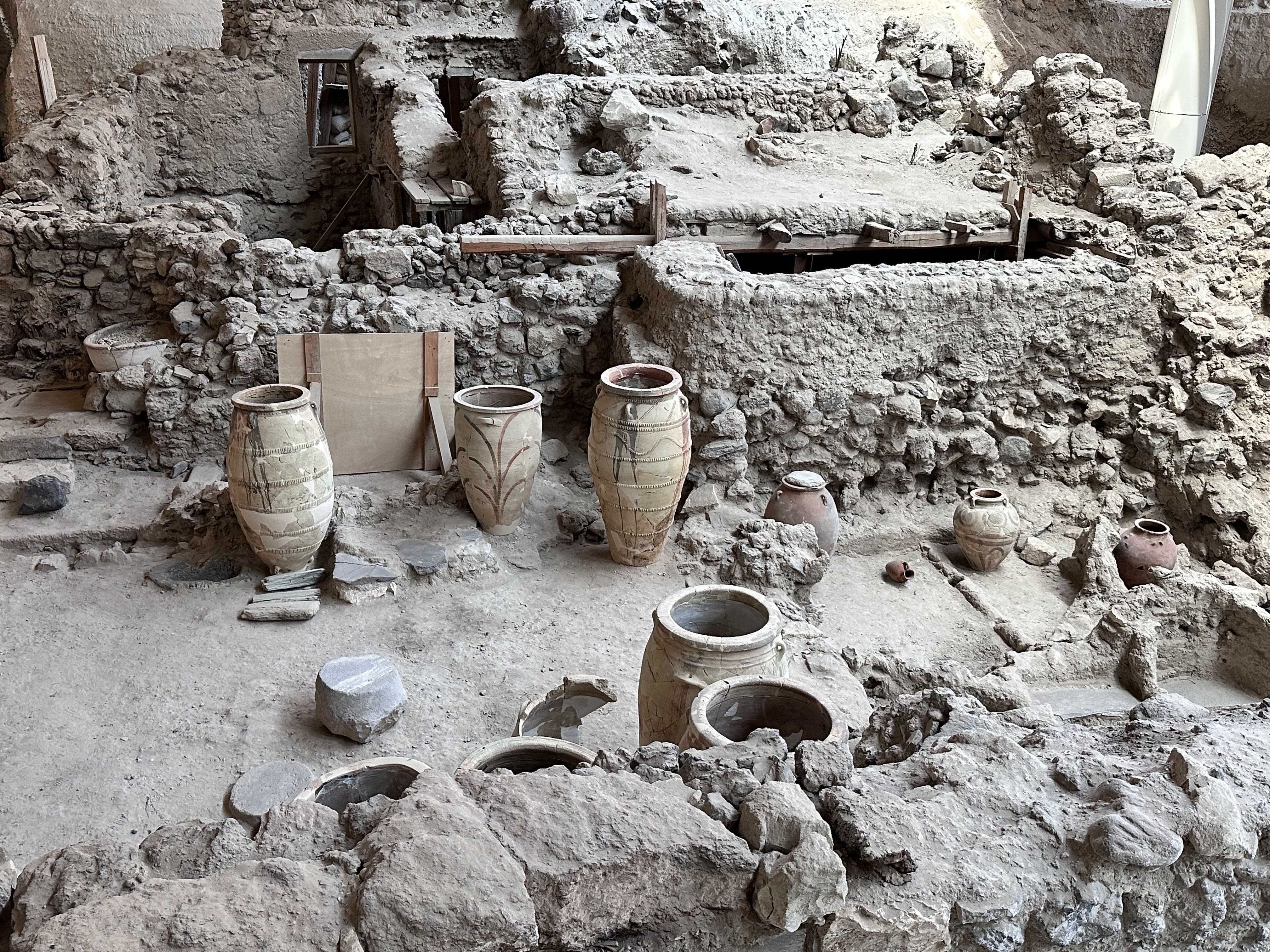
There was one thing Lizy and I were confused about though; where were the bodies? From what we knew about Pompeii, the most impressive part of seeing the site was seeing the preserved human bodies, in various poses corresponding to how they were just before death.
Lizy turned to me and said, “I know it’s a little horrible to say, but I was hoping to see some bodies.”
An Englishman with a keen interest in archeology, which I could tell from the fact that he was wearing a Indianna Jones style satchel overheard our conversation and responded,
“It’s not the bodies you’re seeing at Pompeii. Obviously the bodies decompose. When the archeologists were excavating Pompeii, they noticed these large cavities in the rock. They couldn’t figure out why they had formed, so they filled one of the open spaces with clay. After the clay hardened they removed the volcanic rock surrounding the hardened mold. To their surprise the clay was in the shape of a person huddled on the ground covering its mouth. Soo it’s not the body but the cavities the bodies leave in the rock. I don’t think they’ve applied this clay filling technique to this site yet. But maybe there are still people hidden here. They’ve only excavated a fraction of the city and you can see at most parts here, they’ve only excavated the top floor of buildings that were at least three floors tall.”
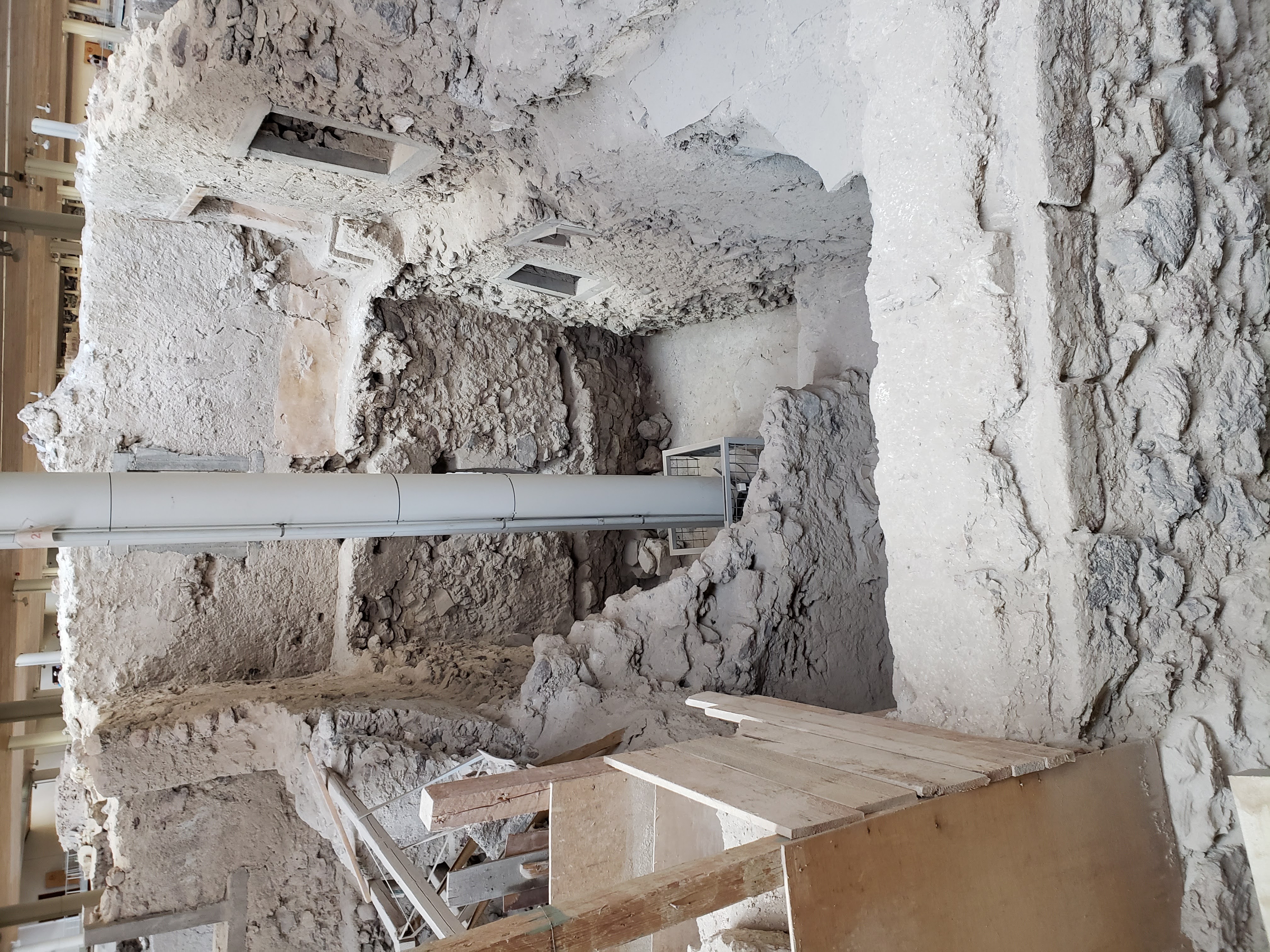
And that’s all I have left to say about the site.
Next, we went to the Santorini Lighthouse. We were told it was a good spot for photos. We couldn’t figure out if we were supposed to get the lighthouse in the background of the photo or the sea in the background of the photo. The lighthouse was nice, but it was similar to other lighthouses we had seen on the trip.
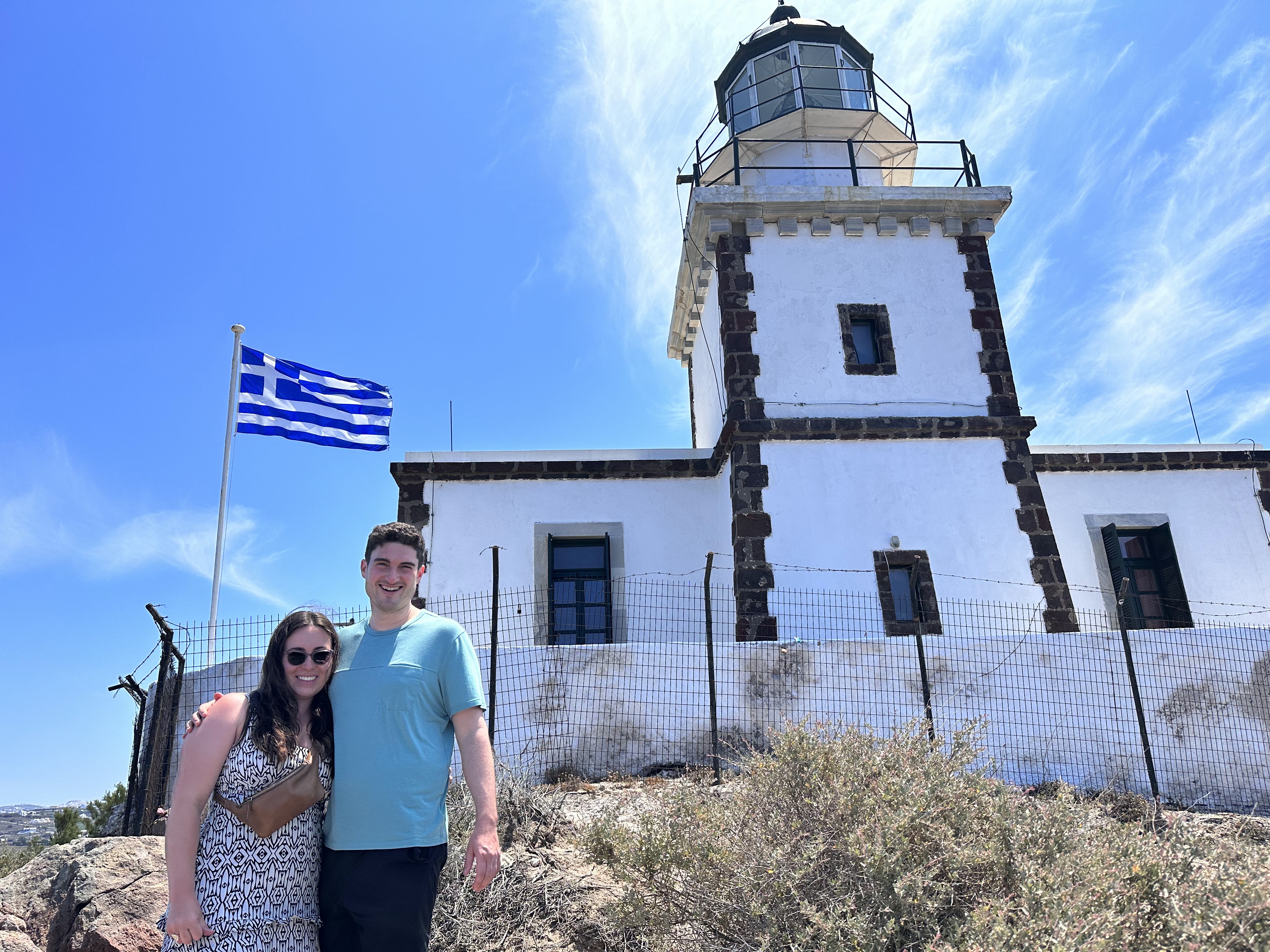

Next we set out for Fira, the capital of Santorini. On the way we saw an Atlantis museum on the road claiming to have a nine dimensional movie. The concept sounded so stupid, that I regret not going.
As we got closer to Fira the traffic got worse and worse. All the roads in Santorini are two lanes. Lots of tourist rent ATV’s which they drive on the roads. The ATV’s are quite slow, so even if there aren’t a lot of cars, you’re moving as slow as the slowest ATV in front of you. There are also a lot of tour buses. I can’t imagine being in one of these ATV’s in the blazing sun, with fumes from a tour bus enveloping me.
On the road there were a lot less flowers than in Crete and the Peloponnese, as it was a lot drier on Santorini. Speaking of water, Santorini does not have enough fresh water to meet the demands of the high level of tourism to the island, so all the drinking water is imported form the mainland. In the faucets and showers was a lightly desalinated sea water processed on Santorini that was not potable.
It took quite a bit of time to get parking near Fira and it was very crowded with cars and ATV’s. We ate lunch at a falafel stand on the outskirts of the city. We talked to an older Indian couple for a bit at an adjacent table at the falafel stand. Lizy told them how she thought it was really silly to rent an ATV, thinking that we would all have a good laugh at the expense of the ATV tourists, but then it turned out the Indian couple had rented an ATV the day before.
Afterwards we walked through Fira. I got a little annoyed at her walking into all the shops, but what can you do? Fira is on the western side of Santorini. All along the western coast of the island is a sheer cliff, called the caldera that was formed thousands of years ago when the volcano erupted. In Fira there were stairs from the top of the cliff, all the way down to the old port. You could get a donkey ride down the steps to the old port. Because of the donkeys there was a bunch of donkey poo on the stairs.
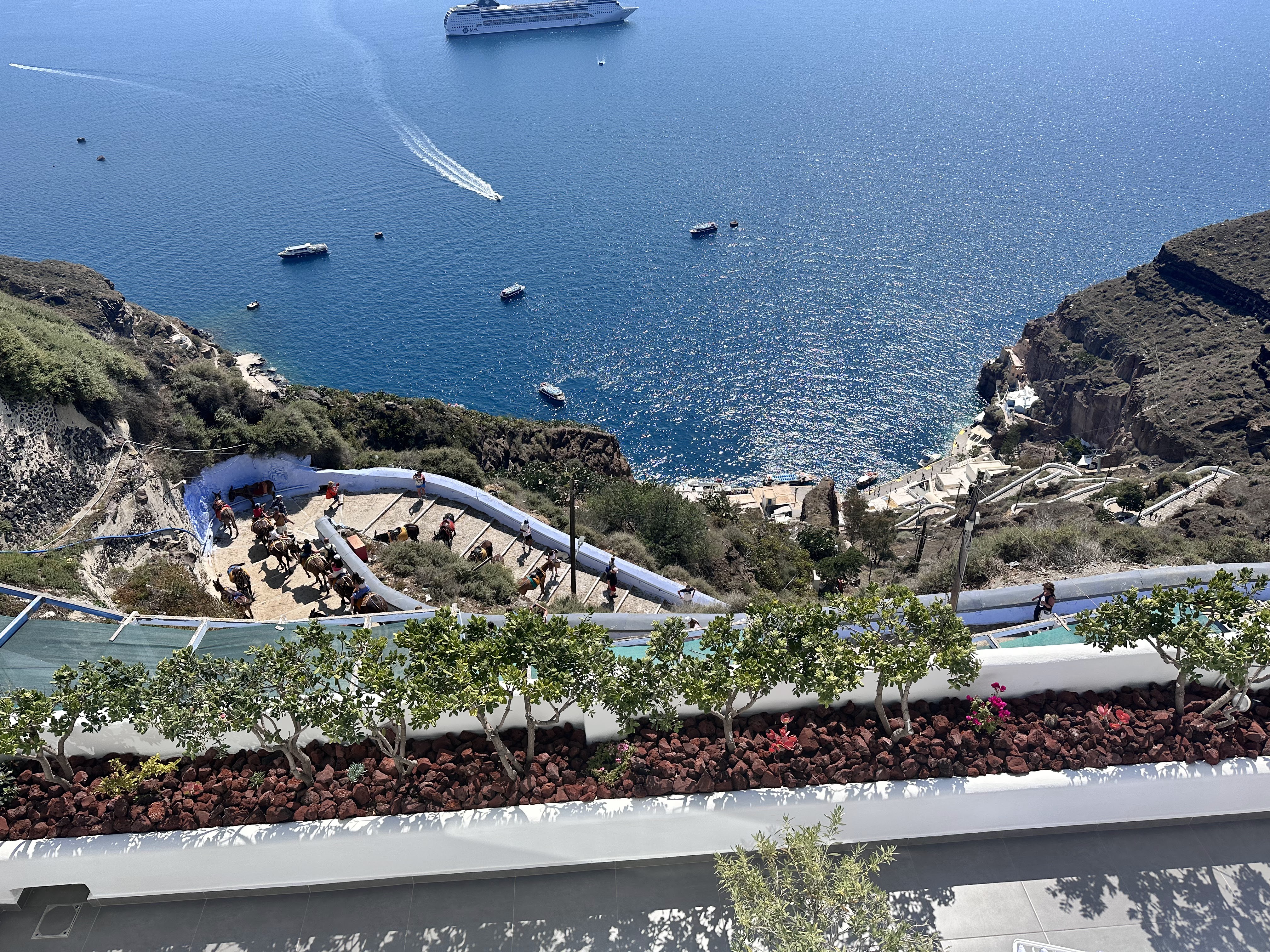
Lizy turned to me and said, “A lot more donkey shit than I was expecting.”
“How much donkey shit were you expecting.”
“None.”
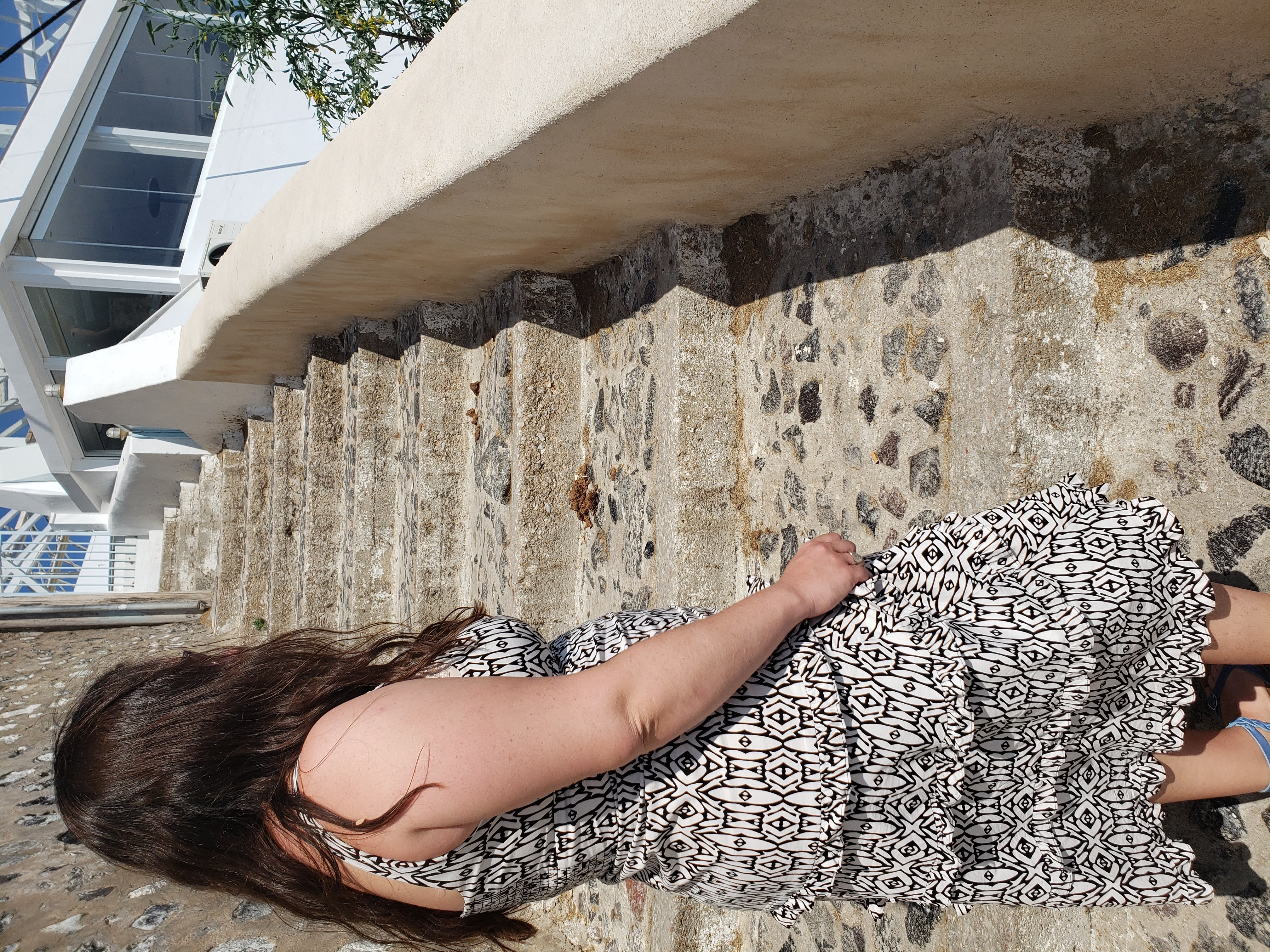
We didn’t walk all the way down the stairs instead veered back to the top of the cliff and walked parallel to the top of the caldera. At some point I veered us off the side of the cliff, hoping to find a little shade in the alleys.
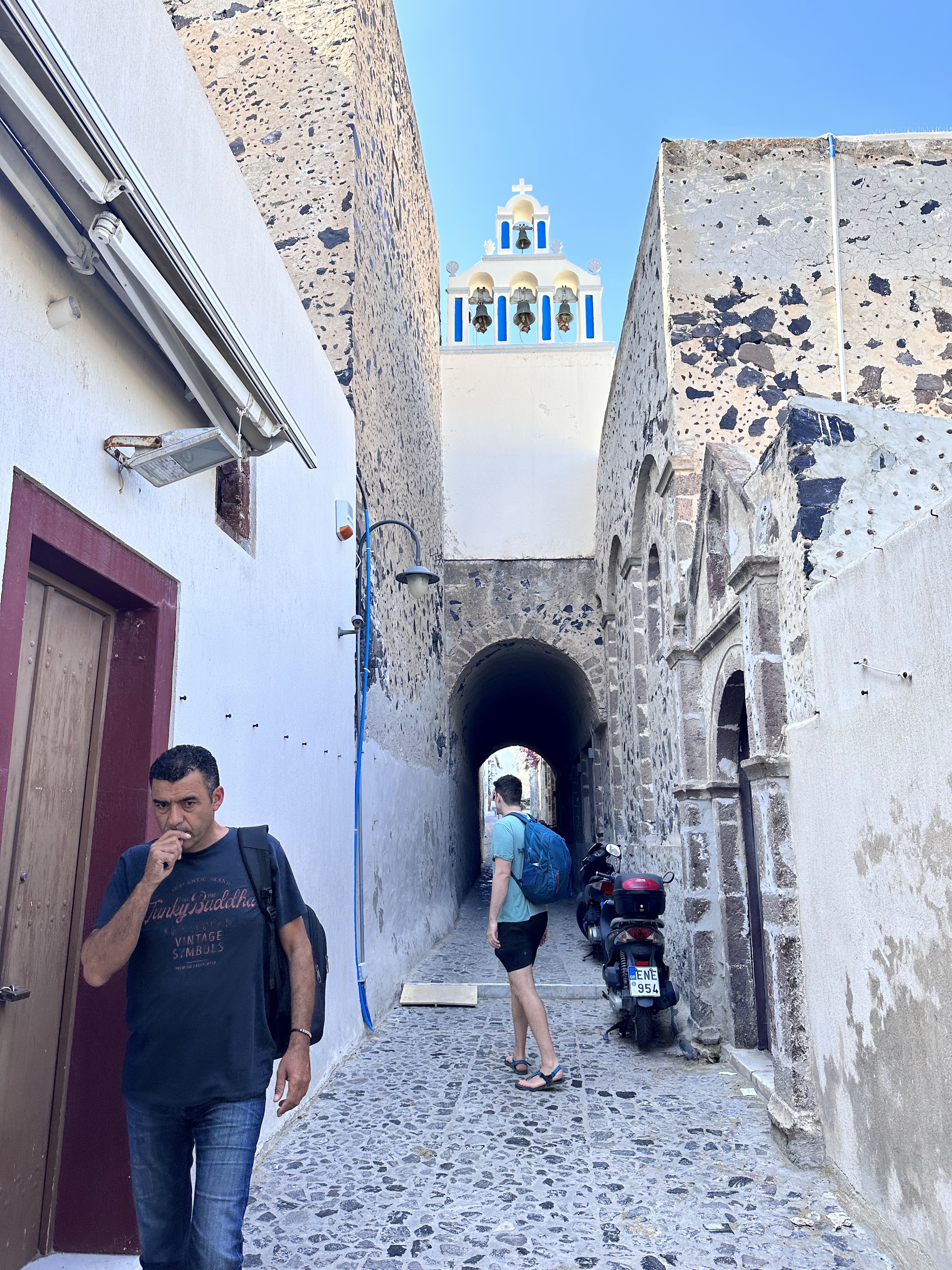
However, when Lizy wanted to get back to the caldera to see the Three Bells Church, I couldn’t figure out how to get back to the cliff. I accidentally got us to walk through a giant resort/hotel. It was built as if it was the labyrinth of Knossos and I couldn’t figure out how to exit. I had to ask a bunch of guests how to get out and Lizy got embarrassed, but eventually we got out of the resort and we found ourselves just outside the church.
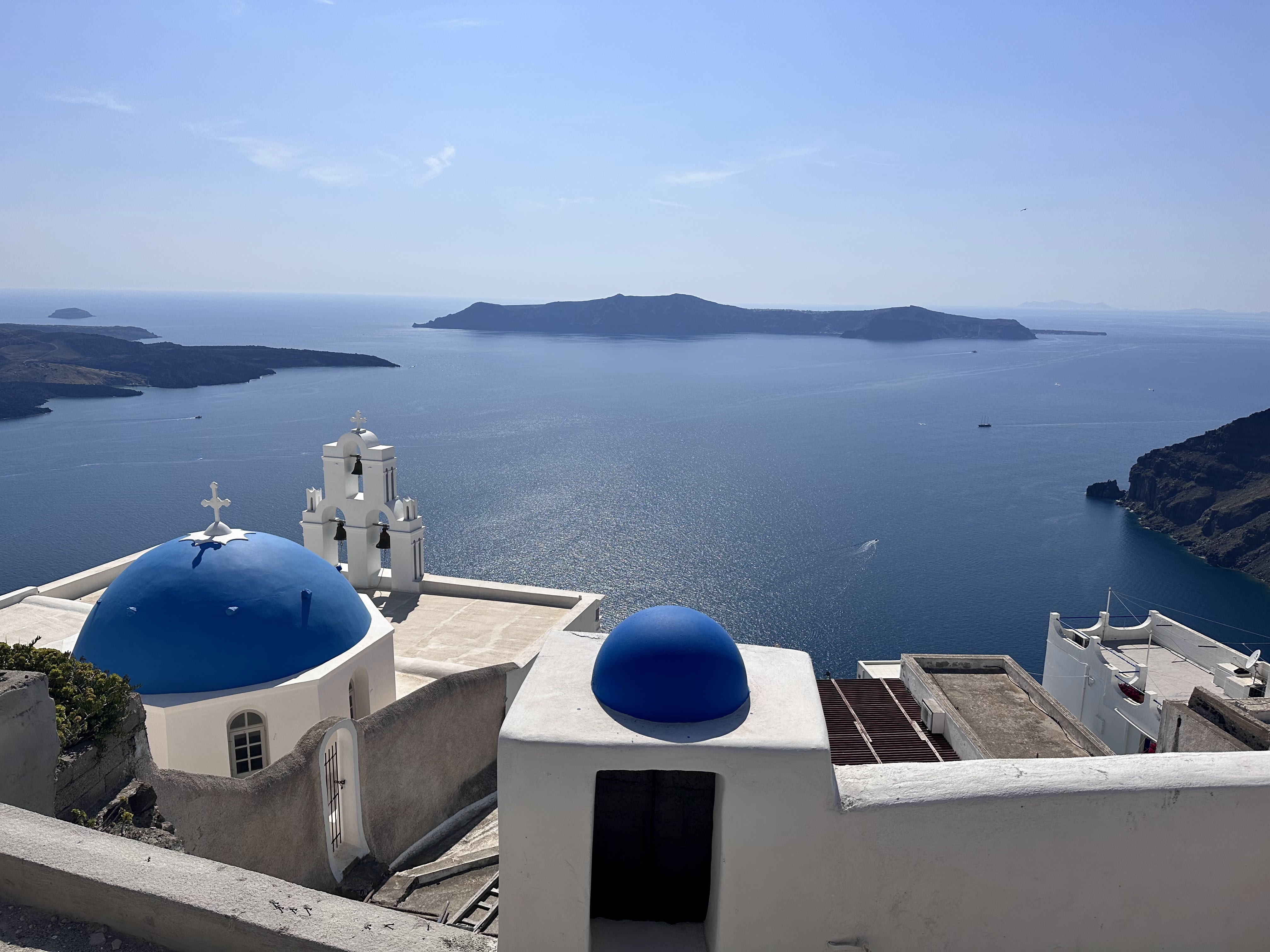
Unfortunately, it was the backside of the famous Three Bells Church. From the back of the church all you could see was the blue roof and beyond the roof the sea. You couldn’t see the white body of the building. Lizy told me she wanted to see the front of the church, so we could get one of those iconic three bells selfies. I was not a simple task getting to the front of the curch. We spent around 30 minutes walking down narrow streets filled with people. We finally got to the front of the church. From the front of the church you couldn’t see the roof because the path was too close to the church. Lizy realized ,that really, the better photo was from the back of the church. I told her it was too bad she didn’t appreciate the back of the building when we were there. There was probably a lesson to be learned.
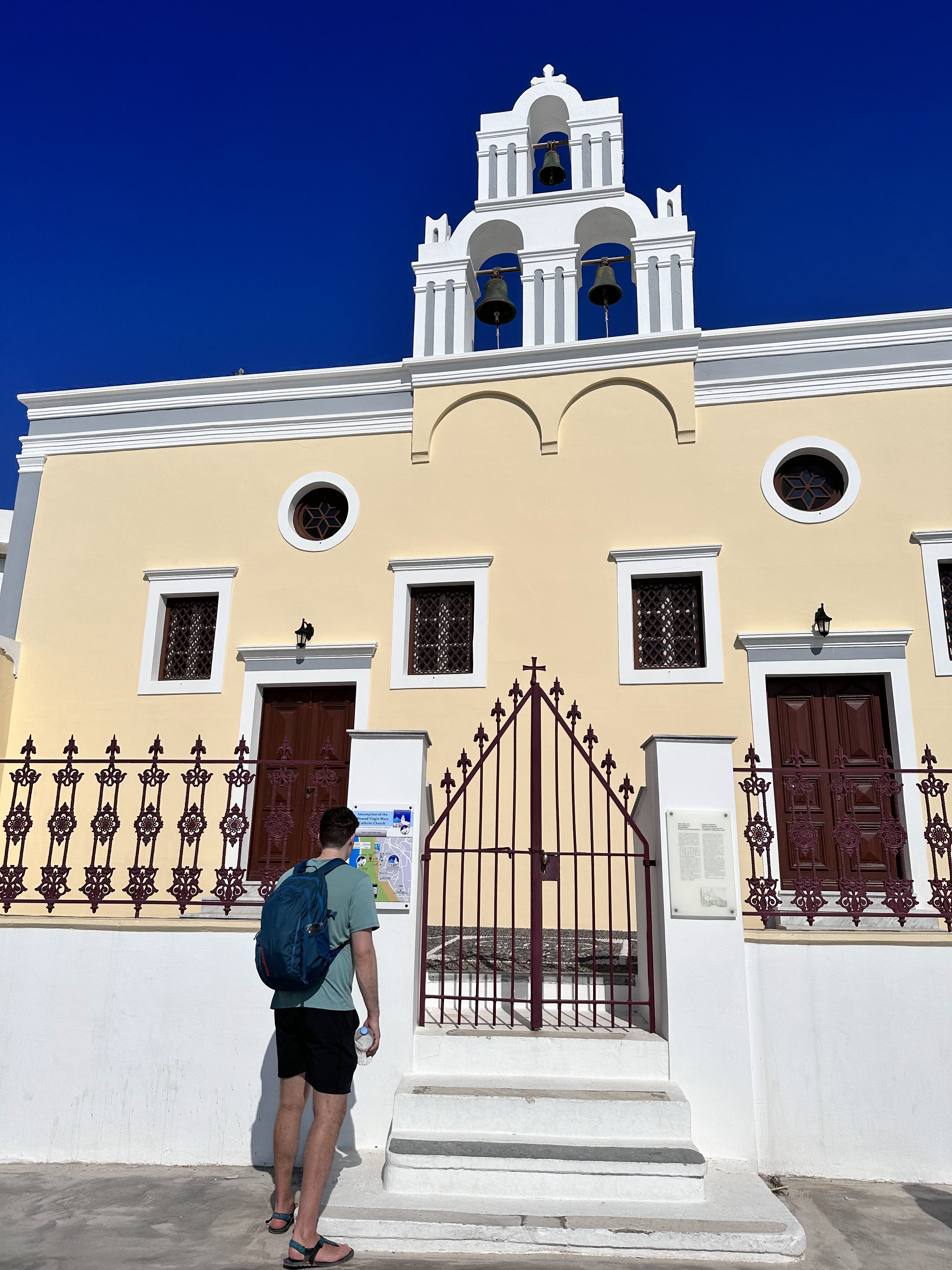
We walked back to the car, so we could drive to Oia to catch the famous Oia sunset. We got to the parking lot, and again finding a parking spot was difficult. Right from the parking lot it felt like we were walking in one giant line as we walked into Oia. We were behind a tour group of old people.
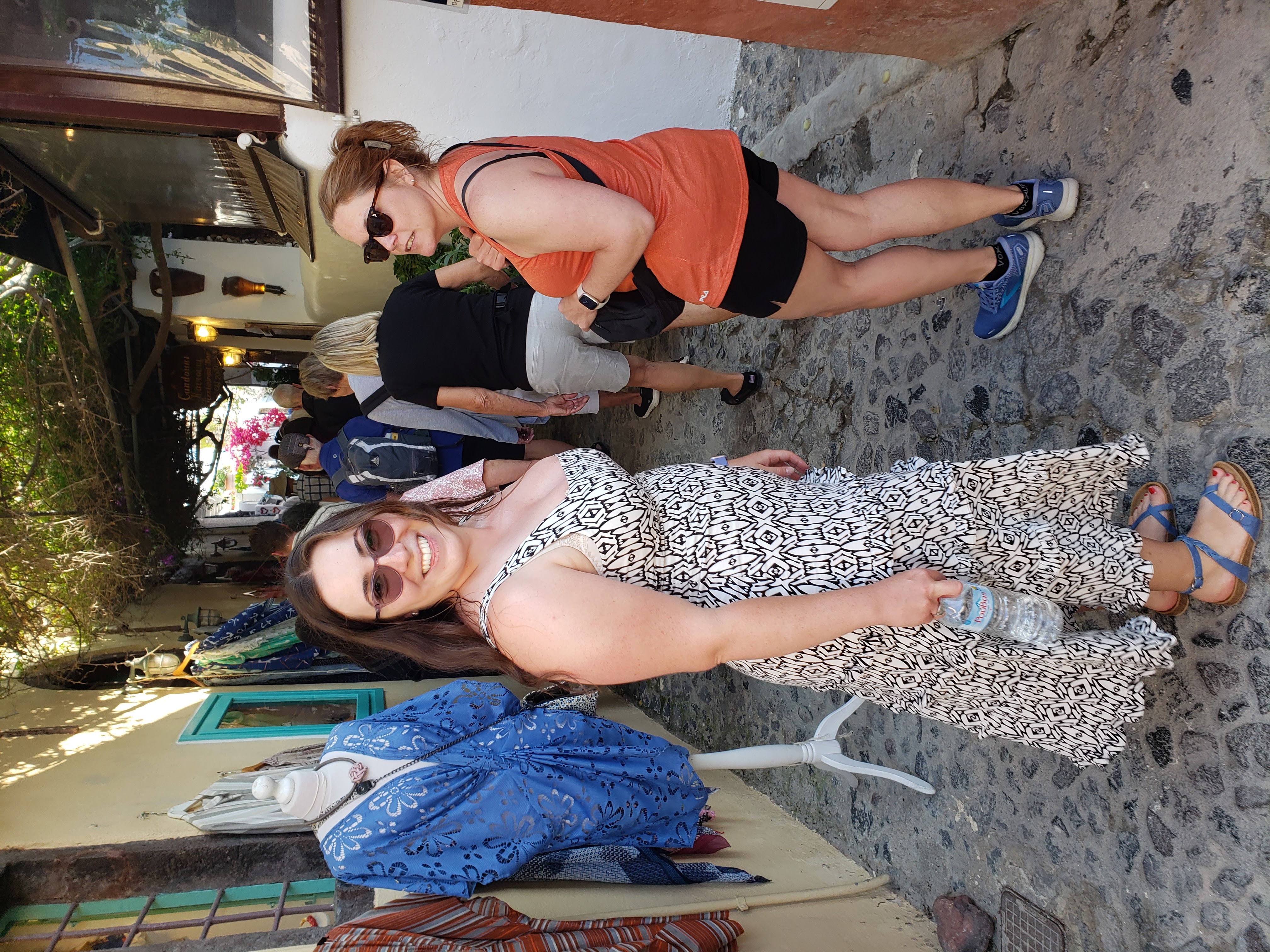
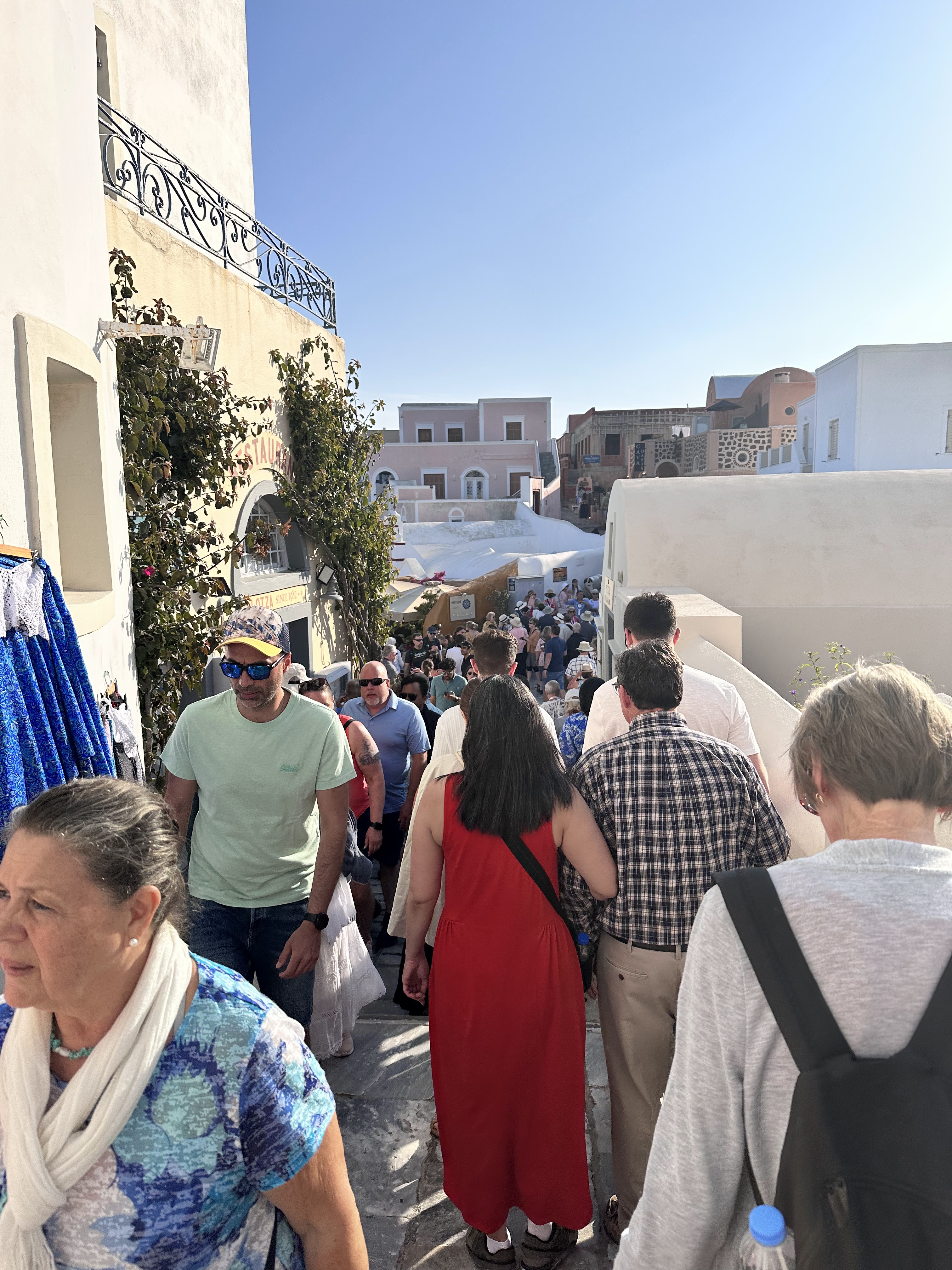
I stopped to use a bathroom and found out the hard way that Oia was the only place in Greece you had to pay to use a bathroom. Lizy was thirsty and tired so we ducked out of the procession of people walking in the queue through Oia and ended up in a wine bar. Even though every table had a reserved sign they gave us the best table. Everything was expensive. A bottle of sparkling water ( like 500 mL) was 8 euros. Wine was 15 euros a glass. You wre paying for the view, but even so I felt like if I bought something for myself I wouldn’t be able to enjoy it, so I had nothing. Lizy ordered a bottle of sparkling water and had some glasses of wine.
We waited at the wine bar for around 2 hours to see the sunset. While we were waiting the bar filled with other couples excited to see the sunset. I got kind of antsy sitting there for so long. I’m not so good at sitting still for so long and I wanted to be able to get up and stretch a bit, but I didn’t want to ruin the experience for Lizy so I really tried my best to hold it together.
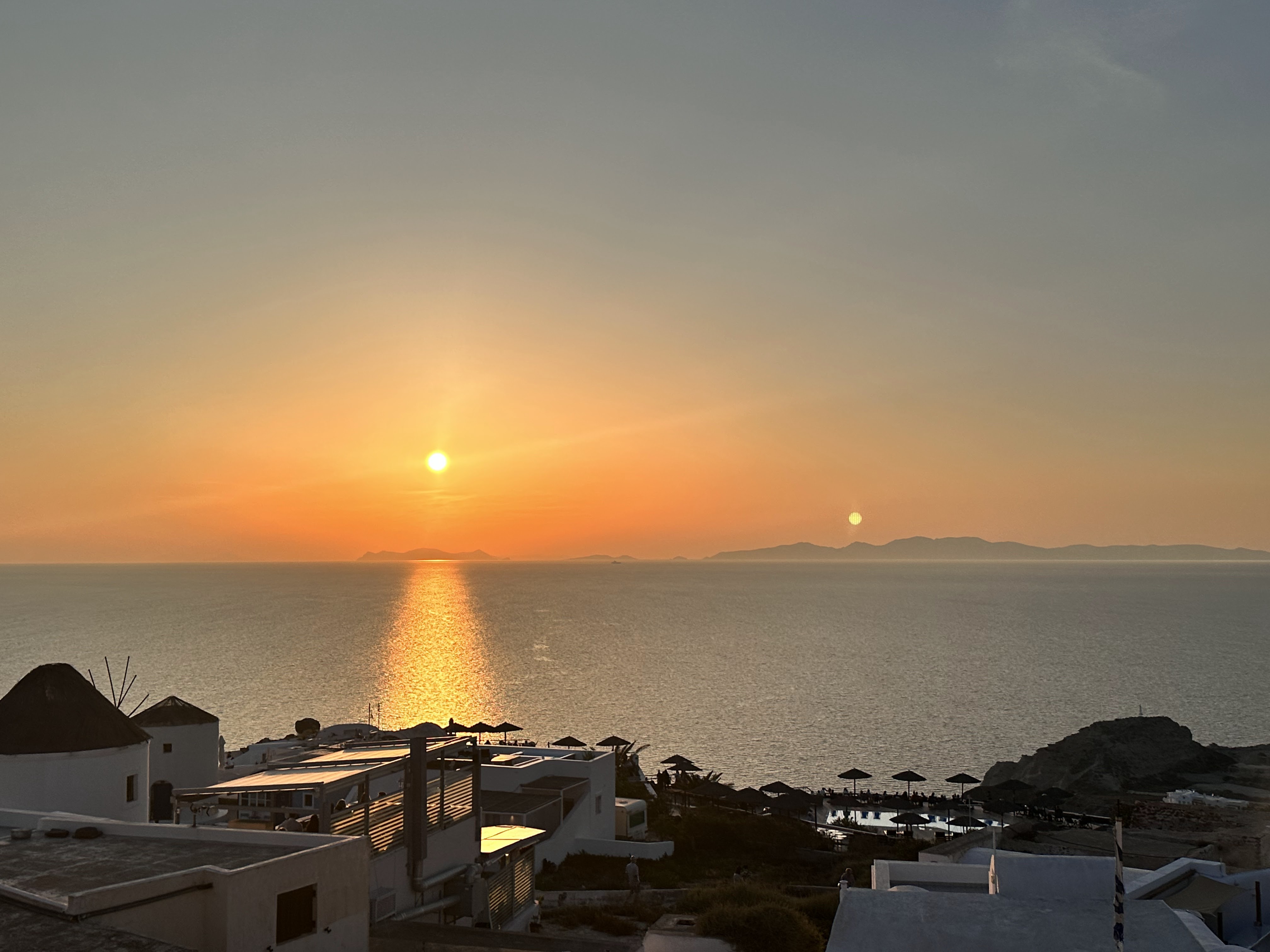
Right before the sunset Lizy was thinking about leaving the wine bar to get a sunset photo on the street. She kind of looked around and saw how busy it was at the bar and I think convinced herself she was in too good of a position to leave. Also, an older couple with a worse table asked us if we could get up to let them to take a photo at our table pre sunset. We obliged them and I think their desire for our table, cemented the idea that we had to stay at our table for the sunset.
Lizy got a woman too take some photos of us at the table. Lizy got a little annoyed at me for not looking engaged enough in the photos. The waiter overheard her complaining and turned to me in sympathy, “It’s never enough.” Lizy insisted, “If he would just sit still, so I could get some decent photos it would be enough.” He replied, “He’s here. He’s waited two hours to watch a sunset. He’s paying our prices for bottled water. If he was posing correctly for the photo, it’d be something else.” The other men at on the terrace nodded at me in solidarity. Lizy looked defeated.
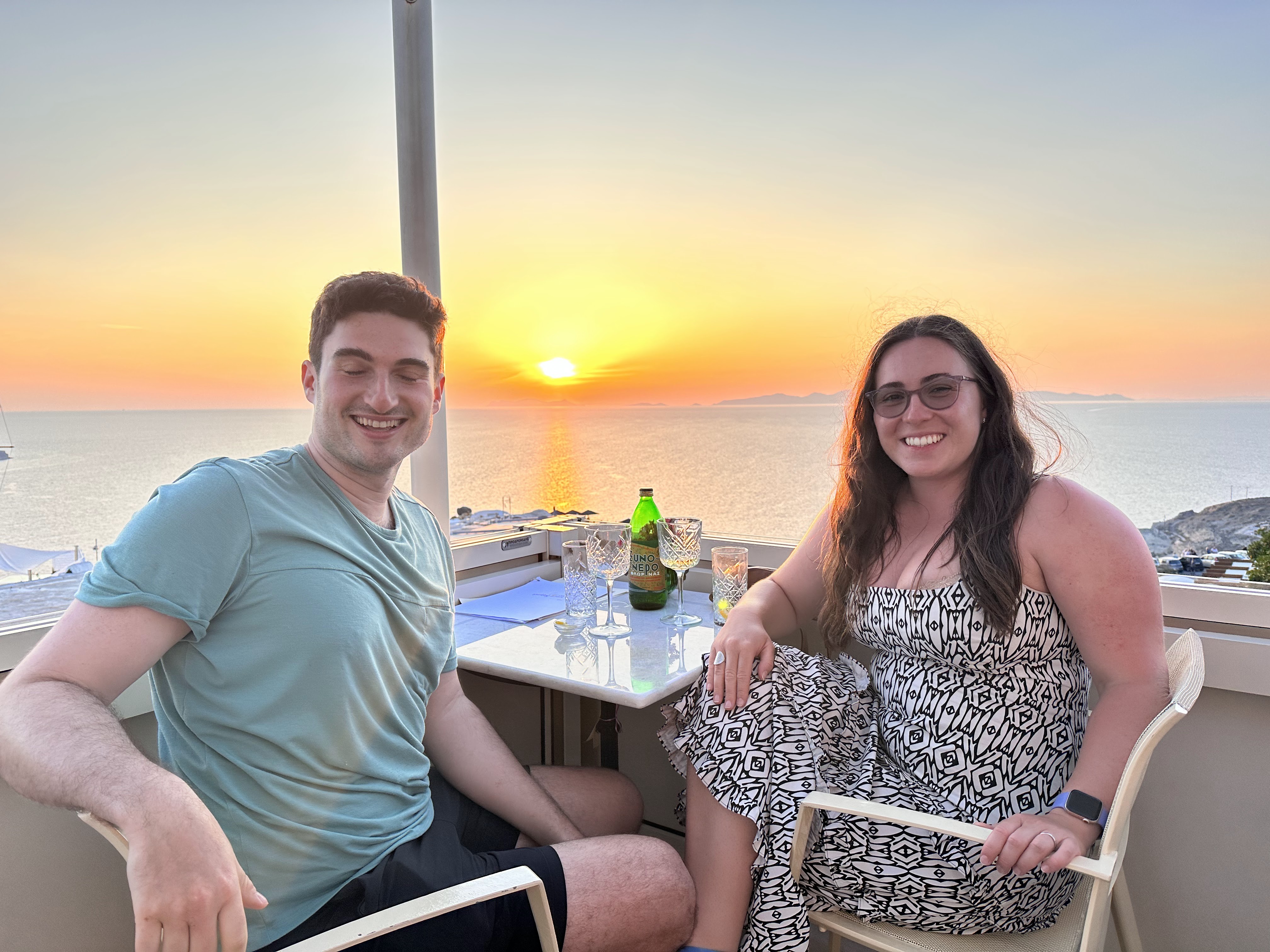
The sunset finally came. What can I say about the sunset? It was a sunset. I’m not sure how often I’ve watched the sunset. I think Lizy got a lot out of it, so that’s good. After the sun dipped below the horizon and the show was over, I heard clapping from all over Oia, as if they were applauding the performers. Who were the performers of a sunset. Maybe they were applauding Helios, the Greek god of the sky. Or maybe they were applauding the sun itself.
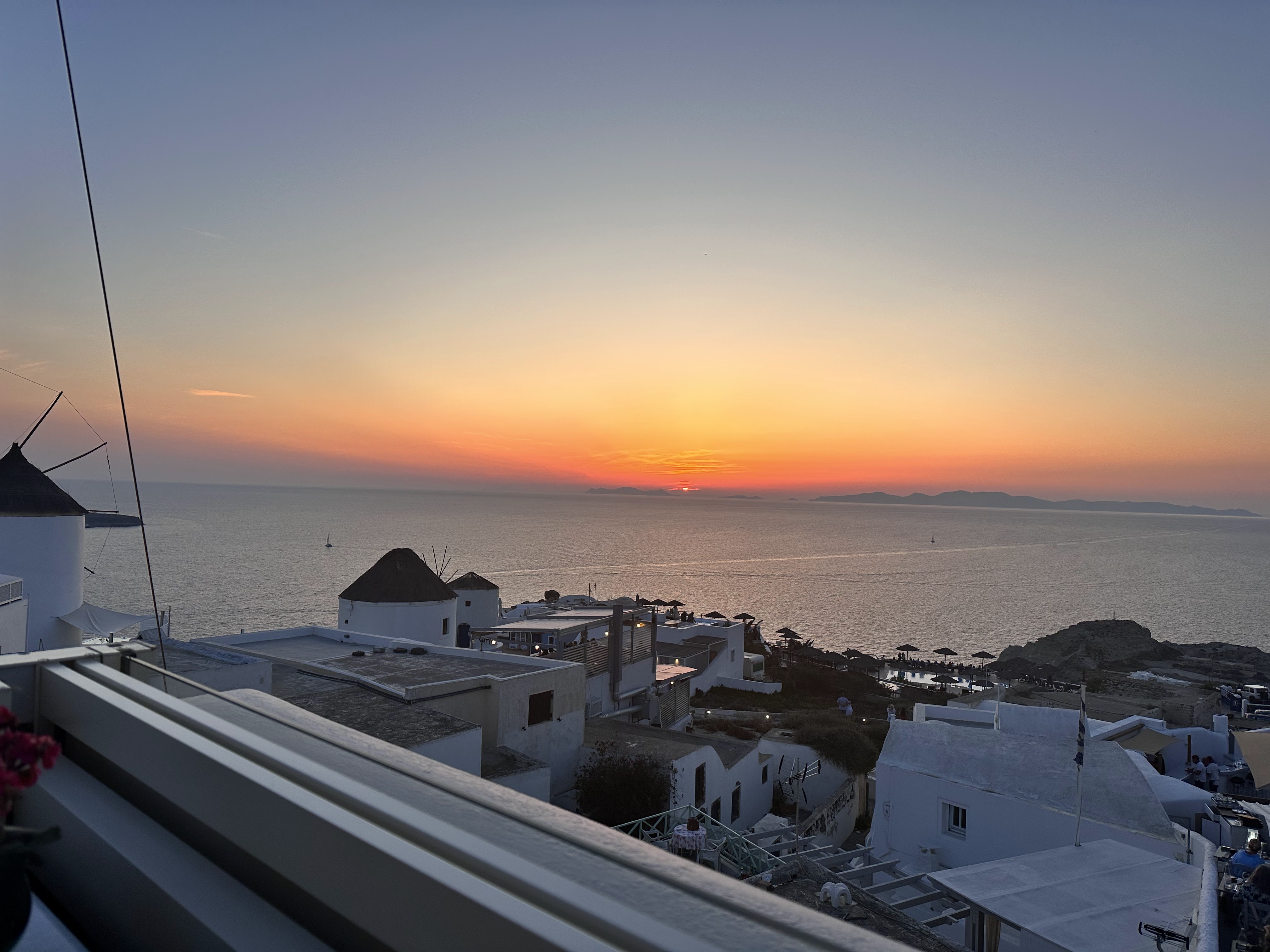
Afterwards, we drove back to the hotel and ate at the hotel restaurant.
